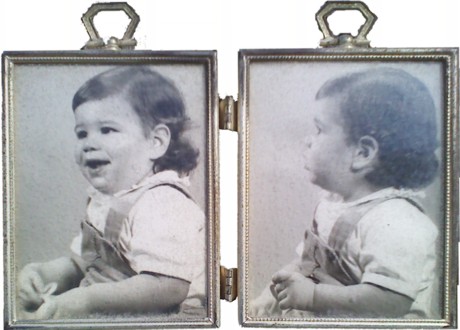Did you ever wonder why your stick of margarine comes out of the waxed paper broken in the middle?
 We don’t use a lot of margarine but every stick in the last few pounds out of the freezer has looked like this.
We don’t use a lot of margarine but every stick in the last few pounds out of the freezer has looked like this.
I tried Googling for the answer. Out of about 6,290,000 results, 6,289,004 came back that “No insect will touch margarine and neither should any human.”
I don’t care about the butter aisle wars. Butter was a no-no. Saturated fats are a no-no. Now trans fats are a no-no. Butter is “all-natural.”
Pfui. According to the Code of Federal Regulations, Title 21, butter and margarine each must contain a minimum of 80% fat. The difference between them is simply the source of the fat: butter is made from cream (moo), and margarine is made from vegetable oil. (“For the purpose of this subpart P ‘butter’ means the food product usually known as butter…”)
Margarine can be used just like “butter” in most types of baking. Since margarine is softer than butter, you probably should not use it pastries and candy made from a boiled syrup. For the record, Anne makes excellent pie crusts but she uses lard.
This is a slippery slope and I don’t care what’s at the bottom. I just want to know why the stick is broken.
Heh. Slippery.
The Pennsy1 still ran when my mother and grandmother were at Swarthmore College but that train station is now part of SEPTA. The fare to and from Central Philadelphia is currently $4.25 during off-peak hours, about the cost of two pounds of butter on sale. Despite the fact that butter comes from cows, this is not the story of the cow in Parrish (cows will climb up but can’t come back down the stairs).
It seems a group of students who shall remain nameless because their legacies might still want admission saved their butter from the dining hall for most of a term. Freezers weren’t available then, so I’m not sure I want to know its condition when that same group wandered down to the Media Local tracks and slathered and slathered and slathered. As you might expect, the train rushed into the station and rushed right on through, much to the surprise of everyone aboard.
College students are one reason butter costs so much more than margarine.
Can I freeze margarine?
Yes, but probably not the whipped style or the low-fat brands which charge you to replace about half the fat with water. Place the package in an air-tight container or freezer bag. Freeze before the use-by date on the package, and store frozen up to six months. The limit is mostly to inhibit freezer smells.
I don’t think freezing had anything to do with the broken sticks I have. We’ve been buying margarine on sale and freezing it for most of my semi-adult life. The sticks sometimes come out a little bent at the corners but they rarely look licked and never have been so consistently pre-divided.
The floor is open for suggestions or scientific proofs.
Me? I think someone dropped the entire pallet of margarine off the top rack of the warehouse.
1“The Pennsy” was the affectionate name for the Pennsylvania Railroad, the largest railroad by both traffic and revenue in the U.S. for the first half of the twentieth century. It was at one time the largest publicly traded corporation in the world.


 In the far reaches of history, before the advent of the electric light orchestra or Dick Tracy’s two-way wrist TV, most people slept in two separate phases, divided by an hour or more of wakefulness. Writers have long liked the uninterrupted time to write and crooks to steal. Field workers could awaken to have sex. Priests might use the time to pray.
In the far reaches of history, before the advent of the electric light orchestra or Dick Tracy’s two-way wrist TV, most people slept in two separate phases, divided by an hour or more of wakefulness. Writers have long liked the uninterrupted time to write and crooks to steal. Field workers could awaken to have sex. Priests might use the time to pray. As far as I can tell, duck hunting is like fishing from a boat except colder. You go out, motor across the lake burning a lot of gas, then sit around all day in a 4×6 room. You end up spending $500 per pound for something I don’t want to eat anyway.
As far as I can tell, duck hunting is like fishing from a boat except colder. You go out, motor across the lake burning a lot of gas, then sit around all day in a 4×6 room. You end up spending $500 per pound for something I don’t want to eat anyway. Mine did, but then a lot of it grew back.
Mine did, but then a lot of it grew back. I shaved my head for the
I shaved my head for the